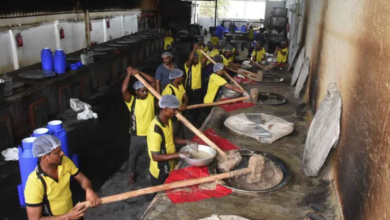The progress of Hyderabad State
Hyderabad: This article is in continuation to the last article focusing on the Nizams and the modernisation of Hyderabad State.
The second half of the 19th century was also a period of significant changes in the administrative, economic, education and socio-cultural system. Similarly, the reign of the sixth Nizam, Mir Mahaboob Ali Pasha, was also significant in bringing about major changes in the political, administrative, socio-economic and cultural fields. He was a popular ruler of Hyderabad who became “the beloved of the people”. He was a liberal ruler and a visionary.
The multi-sided progress in the fields of administration, industry, trade and commerce and education have transformed the Hyderabad State from medievalism to modernity. The reforms of Salar Jung and the sixth Nizam were carried forward by the last Nizam, Mir Osman Ali Khan, 1911-1940. During his period the Hyderabad State witnessed significant changes in agriculture, irrigation, education, economy, industry, trade and commerce. The growth of major public sector industries like railways, motor transport, post and telegraph, air ways, education, public health, irrigation and so on were the distinctive features of the Hyderabad State under the last Nizam.
The rule of the last two Nizams i.e., 6th and 7th also witnessed the flourishing of the composite culture in the Hyderabad State. The growth of art and architecture, literature, fine arts etc., signified the distinctive Deccan culture and the emergence of a new era in the history of modern Telangana.
Historical Background
The Asaf Jahi rulers have occupied a prominent place in the Telangana region for the socio-economic transformation in the 19th and 20th centuries. The period between 1869 – 1911 is very important and significant in the history of the Hyderabad State. The British impact was felt in almost all spheres of life, such as administration, education, economy, politics as well as social structure.
During the reign of sixth and seventh Nizams several reforms were introduced to modernize the State and society. In particular, the Salar Jung reforms laid foundation for the modernity of administrative system, socio-economic development and educational system. This period also inaugurated the development of modern means of transport and communications like railways, roads, electricity, airways, irrigation and reservoirs. In fact, all the major public buildings in Hyderabad City were built during the period of the 6th and 7th. Nizams. The Nizams patronized art, architecture and culture, which became central to the regional identity of Telangana.
The Last Nizam, Mir Osman Ali Khan was known for his wealth as the richest man in the world and jewelry collection as well as the economic reforms. During his regime Hyderabad State witnessed the development of irrigation projects, modern large-scale Industries, and the establishment of educational institutions, viz., Osmania University in Urdu medium. Mir Osman Ali Khan’s rule also experienced rise of socio-cultural awakening and movements of democratization of civil and political system.
The period between 1853 and 1948 i.e., the reign of 6th and 7thNizams indicates that there were many significant developments in the socio- economic and cultural fields in Hyderabad State. The most significant achievement of this period was the maintenance of peace, security, and stability in the Hyderabad State. During the rule of 6thNizam an important constitutional change had taken place. It was known as the Qanooncha –e- Mubarak the Executive Council of the State / Cabinet Council and the Legislative Council. This led to the beginnings of constitutional reforms in the State.
To be continued…








